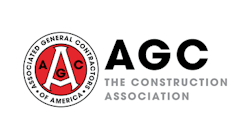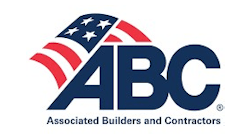Too often, safety managers are perceived as risk-averse, action-stopping do-gooders, says Tom Slavin, a Chicago-based safety consultant. But if a safety manager can create opportunities for project managers and supervisors to communicate safety programs to employees—and get the entire organization involved with safety—then safety adds value by preventing injury and ill health.
Companies operate at three levels of safety performance, says Anthony Veltri, a professor of safety management at Oregon State University. Stage 1 covers about three-quarters of all companies, and includes firms that simply respond to regulations and minimize the cost of safety. Safety is just assigned to the safety manager.
Stage 2 includes 16% of companies surveyed by Veltri, and those firms play catch-up in safety. If company A sees a safety system that works well for company B, then A copies B. Never mind if that safety system does not fit the culture of company A. Stage 3 companies are the best. With them, operating safely creates competitive and strategic value. Safety principles are adopted and practiced by the entire organization.
Slavin advocates the use of a management system to create a safety culture. “A management system provides an organized fashion to get the entire organization involved,” says Slavin. Several such off-the-shelf systems exist, but they don’t all fit construction companies. International Standards Organization (ISO) 14001 is bureaucratic, heavy on documentation, and doesn’t work for many contractors, says Slavin. He calls ISO standards paper tigers. A better one to adopt is American National Standards Institute (ANSI) Z10, a relatively new standard that is more flexible than ISO. “Anybody can do Z10, even the poor performers, because the emphasis is on continuous improvement,” says Slavin.
OSHA VPP, or OSHA’s Voluntary Protection Program, is another management system. Slavin says quite a number of construction companies use it. OSHA has a system whereby they visit your company and certify that you meet their VPP requirements. “OSHA VPP is only for those people that already have good safety records and good programs in place,” says Slavin. “It’s a very powerful program for those people that qualify. But you’re going to see a lot of OSHA because they don’t want to certify you unless they’re pretty sure you’re a good performer, so they’ll make sure you’ve got good programs in place.”
A good management system will have a continuous improvement cycle, says Slavin. Simply put, such a cycle involves “Plan, Do, Check, and Act (Correct or Improve.)” Management leadership involves planning and setting goals. The “Do” part is the implementation—creating your standard programs such as “Lock-Out,” “Tag Out,” “Confined Space,” “Fall Protection,” and so forth.
Next comes the Evaluation and Corrective Action phase. You monitor, measure, and assess your safety performance. You have a system in place for Incident Investigation, and you seriously track Near-Misses and learn from them. You audit your safety program, and you produce an annual (at least) progress report.
“It’s very important that employees understand that there is a safety program and that injury reporting is important,” says Slavin. “A lot of people often get the wrong message, because we don’t spend enough time communicating to employees. And if there’s an injury, and it’s a bad thing, people get called on the carpet. You tend to say, ‘Well, let’s not report that, it’s not a big deal.’ We often look at it as ‘Who is to Blame?’ and ‘Who is to Punish?’ We want people to report near-misses, so we can learn from them. And we want to encourage people to suggest improvements or identify issues.”
Some things need to be documented. For one thing, documentation of training can be a great help in defense against injury claims. “You need some documentation just so you know that you’re improving, so that you can document your opportunities to improve,” says Slavin. “If somebody gives you a suggestion, and you don’t write it down, then you forget it and then that employee is discouraged because nothing ever happened! You want to make sure you learn from your mistakes.”
Slavin says when someone in your company has an injury, it’s important to look for the root cause. If an unsafe act was involved, what was the employee thinking when they did that unsafe act? “Too often you see an injury report and the cause of the injury was that the employee was careless and the corrective action is that they were told to be more careful next time. That kind of stuff just does not get you anywhere,” says Slavin. “You really need to look at why it made sense for that employee to do what he did at the time. And then you can learn from it so that you can improve.”
Slavin cautions safety managers to beware of paper tigers. “That’s when you’ve got a program in place that’s in writing and that’s all it is, is writing. It looks good on paper. You can spend a lot of time writing safety programs,” he says. “It’s more important to get to the people and change the culture than it is to have an elaborate program written down.”
Metrics can be powerful ways to measure safety performance. Traditional indicators like lost-time rates and reportable incidents are lagging indicators, says Slavin. “It’s like driving by looking in the rear-view mirror. We’re looking at the past and trying to figure out what we need to do in the future.”
Leading indicators of safety performance—such as your safety audit score—are more powerful. Slavin says the safety audit, which is like a huge checklist, can produce a score that you can measure from time to time. A good safety audit will identify those areas in which improvement are needed. “So we don’t just say, ‘Oh, you had an accident and you need to fix that,’” says Slavin. “We say you had an accident, but you don’t have this program in place, or, people are not doing this. So the audit becomes a road map for improvement.”
Another leading indicator is training. You can count the number of people trained in fall protection, and monitor the number from time to time, for example. “If you’ve got a project where everybody is trained that needs to be, and another project where only 5% of the people are trained, the indicator tells you where you need to focus some effort,” says Slavin.
The number of supervisors who have safety as part of their goals or performance is another leading indicator. “You can look at projects where all the managers seek to improve the number of people trained, and then look at other projects where the only important thing is to meet the production schedule,” says Slavin.
Slavin says he often hears from safety managers that they “want more support.” It’s often not that top senior managers don’t support safety—it’s that they don’t know how to incorporate safety into what they’re doing. “So part of a safety manager’s job is to provide the metrics or provide the feedback—and in some cases, you need to push managers to say things or include factors about safety,” says Slavin.
It’s important that managers have an opportunity to emphasize their support for safety. The medium could be toolbox talks, or different types of meetings. The safety practitioner can help create those opportunities, or at least give those managers materials to support safety.










